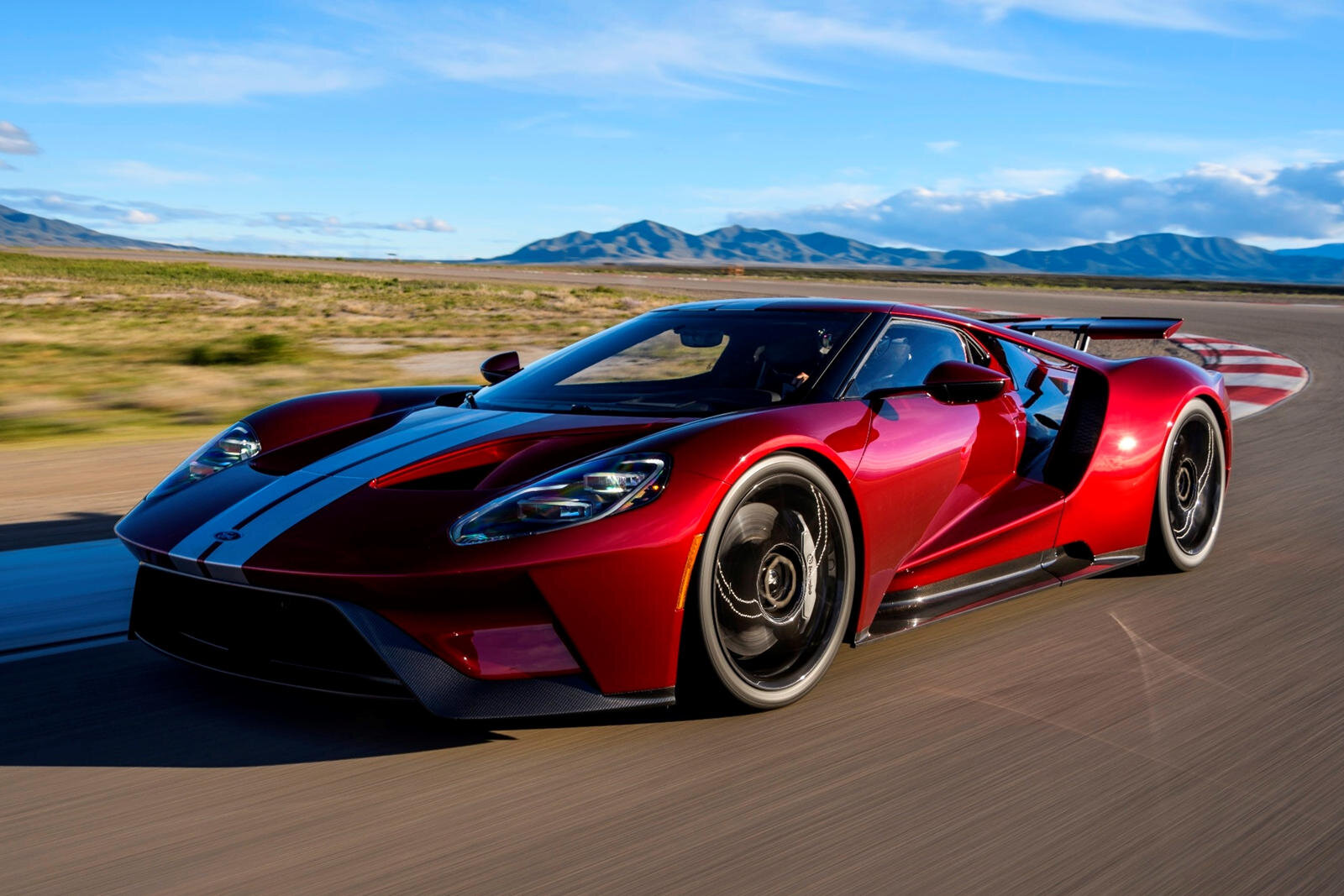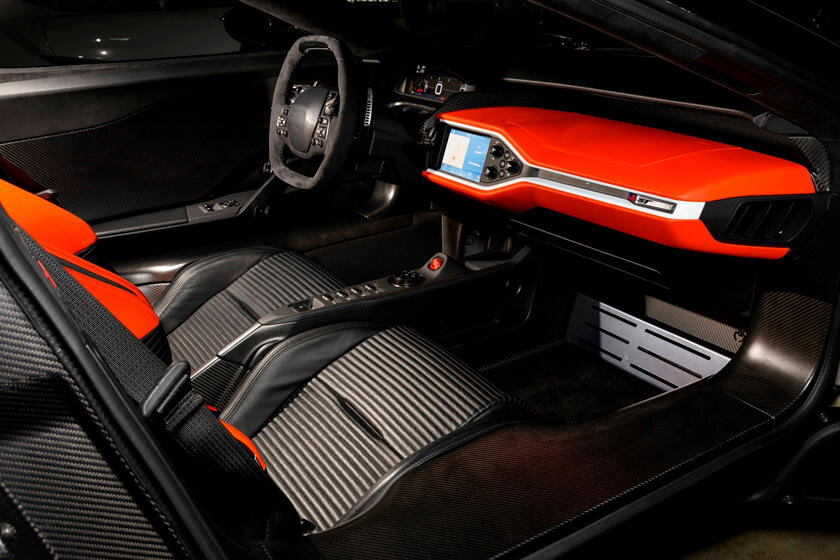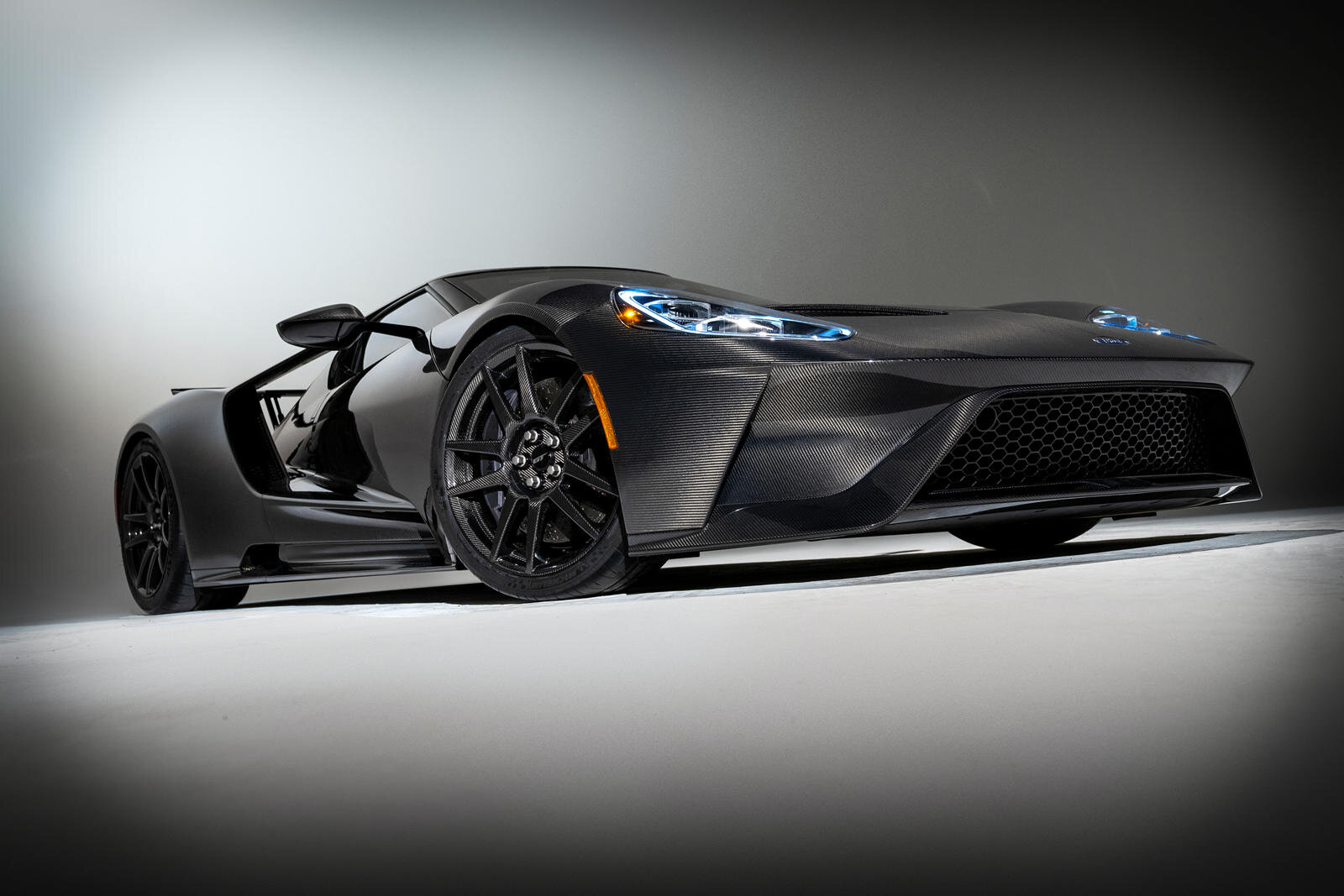The Ford GT
2021 Ford GT Supercar | © Photo Courtesy of Ford Motor Company
An Iconic Supercar Gets Star Treatment
It’s the original North American supercar. Its storied history is a legendary tale of heroic efforts and final victory in the face of daunting odds. Its modern rebirth marks a new era in the art of automotive design and technology.
This is the Ford GT.
The Ford GT40 is possibly the most iconic mid-engine American car. Along with the modern GT models, Ford’s supercar has continued to evolve for more than 50 years. While the GT40 is no longer available, the regular GT for the 2021 model year is here and can be customized for the tastes of even the most discerning owner. But don’t expect to see one at your local Ford dealership. These cars have a very limited production run, and the starting price is $500,000. Very few people are allowed to purchase one.
As for why this magnificent machine is more desirable than the big-name foreign models so many people think are impressive, it’s always better to buy American. Plus Ford and the GT both have pedigrees that are unmatched in automotive design, manufacture, and staying power.
The GT’s History
If you’re a car buff, you’ve seen the film Ford vs. Ferrari at least a few times. The story, of course, is true and revolves around a team of American and British engineers and designers, led by automotive designer Carroll Hall Shelby and his British driver, Ken Miles. They are dispatched by Henry Ford II and Lee Iacocca with the mission of building the Ford GT40, a new racing car that can finally defeat the perennially dominant Italian racing team Scuderia Ferrari at the 1966 24 Hours of Le Mans race in France.
From never having beaten Ferrari the Ford team designed, built, and drove the GT40s to finish in 1st, 2nd, and 3rd Places in the ’66 race. The Ford team then racked up three more Le Mans victories in 1967 with the J5 (Mk IV), and in 1968 and 1969 with the GT40P/1075 (Mk II).
In addition to those four, consecutive overall Le Mans victories, Ford also won the four FIA international titles (at what was then unofficially known as the World Sportscar Championship) with the GT40: The 1966 International Manufacturers Championship – Over 2000cc; the 1966 International Championship for Sports Cars – Division III (Over 2000cc); the 1967 International Championship for Sports Cars – Division III (Over 2000cc); and the 1968 International Championship for Makes.
The photo finish of three GT Mark IIs at the 1966 Le Mans race. | © Photo Courtesy of Ford Motor Company
That Was Then. This Is Now.
But the story goes back 118 years. The Ford Motor Company was founded by Henry Ford and incorporated on June 16, 1903. For most of its history the company has been run by members of the Ford Family, perhaps proving that genius in genetic. For all but approximately 34 of those almost 120 years, a Ford has been Chairman, CEO, or both of the company.
Today, William (Bill) Clay Ford, Jr. is Executive Chairman of Ford. He is the great-grandson of founder Henry Ford. He’s also the great-grandson of Harvey Firestone, founder of the Firestone Tire and Rubber Company, so the automobile business is in his blood.
Bill Ford joined the board in 1988 and has served as Chairman since January 1999. He has also served as President, CEO, and COO. Bill earned his B.A. degree from Princeton University and his M.S. degree from MIT. Oh, for you football fans, he’s also the Vice Chairman of the NFL’s Detroit Lions.
As Chairman of Ford, he has been a visionary, not content only to oversee the manufacture and sales of cars and trucks. He has spent many years as an advocate for making improvements in all forms of global transportation. He’s said that governments and private industry need to rethink transportation infrastructure and technology; as the world’s population increases the existing infrastructure will be unable to keep pace unless we’re more forward-thinking. In January 2010, he announced the launch of a strategic investment firm, Fontinalis Partners, with the purpose of investing in innovative companies developing next-generation mobility solutions.
Ford announced during its fourth-quarter earnings report that it will invest $22 billion in electric vehicles and $7 billion in autonomous vehicles through 2025. The electric-vehicle investment is an increase above the $10 billion already pledged to help Ford compete in the race to bring electric vehicles into the mainstream.
With Bill Ford in charge, there’s no doubt they’ll succeed.
2002 Ford GT40 Concept Car | © Photo Courtesy of Ford Motor Company
The Return Of The GT
Very few companies survive and thrive into their 100th year, but Ford is one of them. To celebrate their centennial, Ford unveiled a new version at the 2002 North American International Auto Show: The GT40 Concept Car. Camilo Pardo is credited as the chief designer and worked under the guidance of J Mays. The original designer of the Shelby GT500, Carroll Shelby, was also enlisted to help with the development of the GT.
The new GT has a similar look to the original GT40, but this is an entirely different car. The GT is structurally different – bigger, wider, and 4” taller – but is still a high-performance vehicle. Less than two months after its unveiling, Ford announced a limited production run of the car. During 2003’s centennial celebration three pre-production cars were unveiled and delivery of the production version of the Ford GT began in 2004.
The GT Keeps On Winning
On June 19, 2016 the #68 Ford GT of Ford Chip Ganassi Racing finished first at the 24 Hours of Le Mans in the LM GTE-Pro class. The win marked fifty years from when Ford won the 24 Hours of Le Mans in 1966, where they came first, second and third with the GT40. In the 2016 6 Hours of Fuji and the 6 Hours of Shanghai, the two Ford GTs finished 1–2 at both races.
In the opening WEC race at Silverstone, the #67 Ford GT took victory. Then on June 19, 2017 the #67 Ford GT of Ford Chip Ganassi Racing finished runner up at the 24 Hours of Le Mans in the LM GTE-Pro class.
But you don’t have to enter Le Mans to drive a GT. Modified versions have set several speed records, including the standing mile. And in Texas in March 2019 one modified version holds the record for fastest street legal vehicle (the vehicle used in the record run is street legal and registered for road use in the U.S.A) achieved by a highly modified twin turbo version of the original 5.4-liter V8 rated at approximately 2,500 hp with a top speed of 300.4 mph.
So, What’s the Deal With the 2021 GT?
It’s not just the power and speed that gives car fanatics goosebumps whenever they think about owning one. It’s the styling that is more art than auto. The extensive wind tunnel testing resulted in its sculpted, teardrop shape. This optimal aerodynamic shape minimizes drag and maximizes downforce. The body is lightweight and strong, composed of carbon fiber with aluminum structures to minimize the weight of the high strength subframe.
Nicer still is the ability to customize your Ford GT. First, there are four “Series” to choose from: Ford GT Competition Series, Ford GT ’67 Heritage Edition in Race Red, Ford GT ’66 Heritage Edition in Shadow Black, and the Ford GT ’66 Heritage Edition in Matte Black. Each of these cars boasts a different look. For example, the GT ’66 Heritage Edition honors the Ford Mark II GT40 driven by Bruce McLaren and Chris Amon that won Le Mans in 1966, part of a historic 1-2-3 Ford GT sweep.
Next, Ford offers six styles of 20” forged aluminum wheels and four 20” carbon-fiber wheels – not to mention the five brake caliper colors. Each spectacularly complements the styling of your GT choice, and you can get just as excited about the wheel design as you can the body.
There are four choices of interior, and while the GT may echo the past, these interior designs take you into the future. The descriptions of each would run pages, but to whet your curiosity, here’s how Ford describes the Launch Control interior:
• Ebony and Orange Leather-Wrapped Carbon Fiber Seats with Pillowed Leather Inserts and Head-restraints with Debossed GT Logo
• Ebony and Orange Leather-Wrapped Instrument Panel, Pillars, and Headliner
• Exposed Matte Carbon Fiber Door Sills, Air Register Pods and Center Console
• Matte Frozen White Appliqués on Instrument Panel and Seat X-Brace
• Ebony Alcantara®-Wrapped Steering Wheel with Anodized Black Shift Paddles, Leather-Wrapped Horn Pad with Debossed GT Logo
But they all have to be seen to be really appreciated.
The Ford GT’s standard features would seem like luxuries on any other car. There’s the mid-mounted 3.5L V6 GTDI engine, 7-speed, dual clutch automated manual transmission with sequential shift controls (paddles), rear-wheel drive with dual exhaust system, five selectable drive modes with two variable ride height settings, lightweight lithium-ion battery, 9.0:1 compression ratio, 647 hp at 6250 rpm, torque at 550 lb.-ft. at 5900 rpm – again, so many highlights, so little time.
The technical specs are also quite impressive. This two-person capacity icon features sequential electronic direct and port fuel injection, 4-stage external dry sump oil pump lubrication, EPA-Estimated Rating of 11 mpg city, 18 mpg highway, 14 combined (actual mileage will vary – naturally), 106.7” wheelbase, overall length and width (body) of 78.9” and 43.7” at normal ride height (41.7” at low ride height), 4.7” and 2.75” ground clearance at normal and low ride heights…and just too many other features to mention.
Functional highlights are just as impressive: Driver Configurable 10.1” Color LCD Instrument Cluster; 6.5” Center LCD Touch-Screen with Swiping and Pinch-to-Zoom Capabilities; SYNC® 3 – Enhanced Voice Recognition Communications & Entertainment System; Voice-Activated Touch-Screen Navigation System; Active Noise Canceling System (Non-Competition Series Only); Intelligent Access with Push-Button Start; and Rear View Camera (Non-Competition Series Only).
Take a look at the Ford GT website to see all the features available in each model. Just be sure you have lots of time, because you can spend hours mixing, matching, and marveling at all the choices and combinations.














